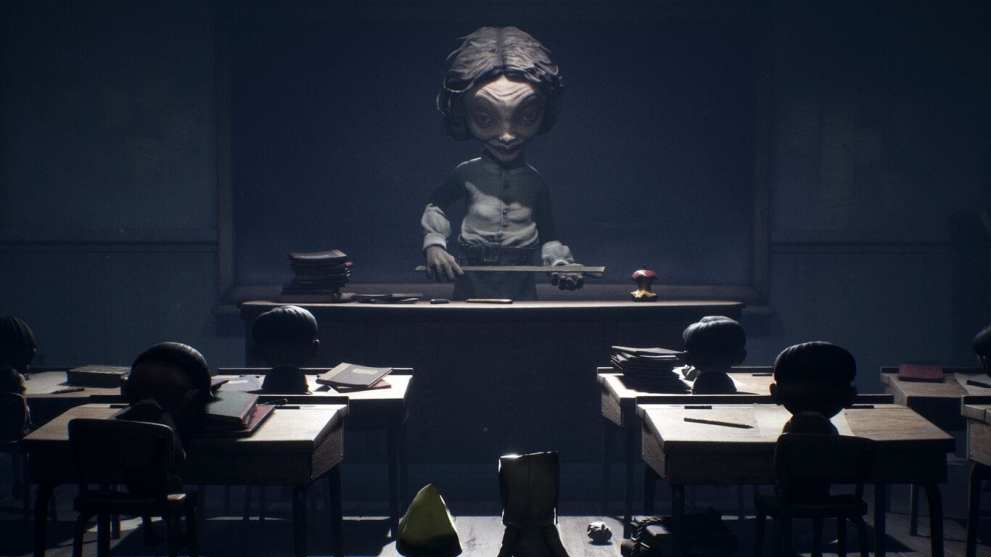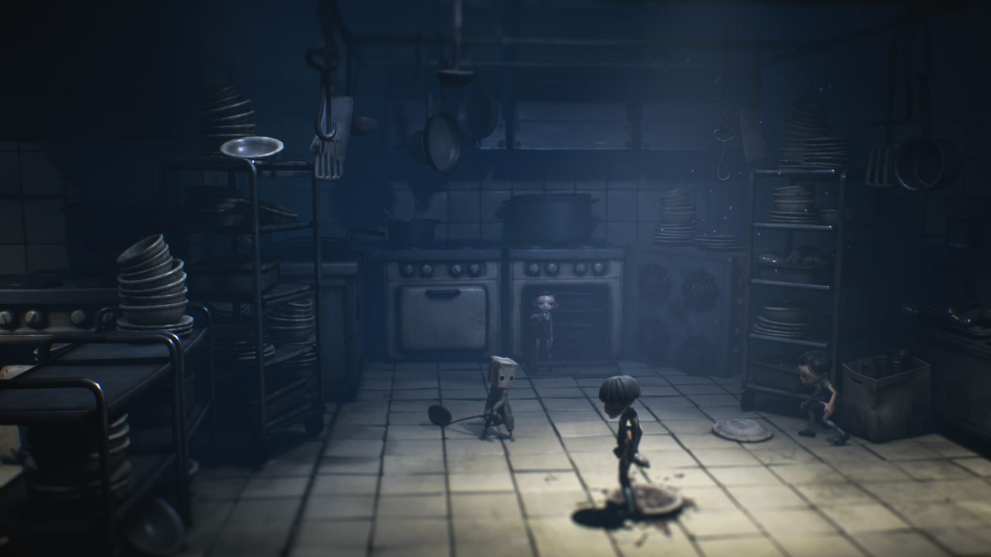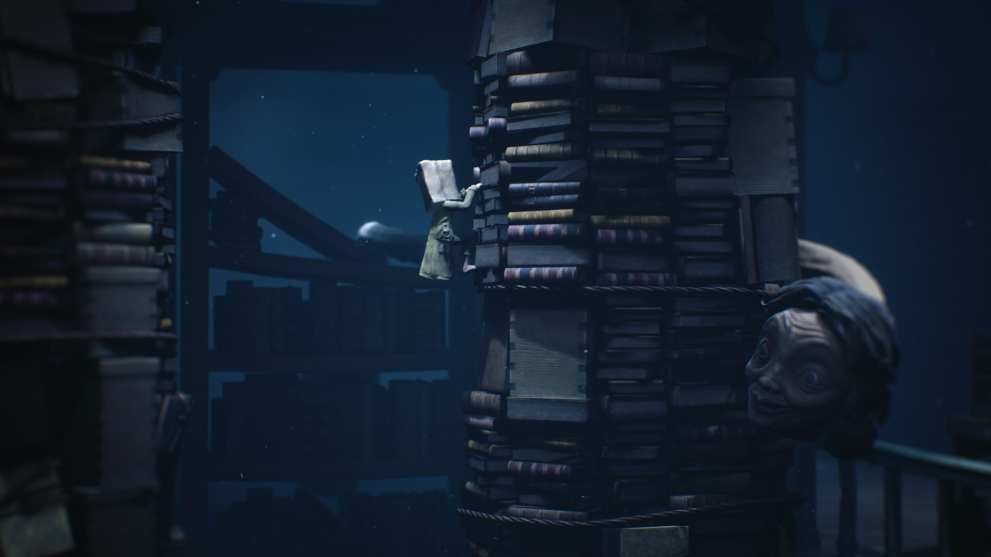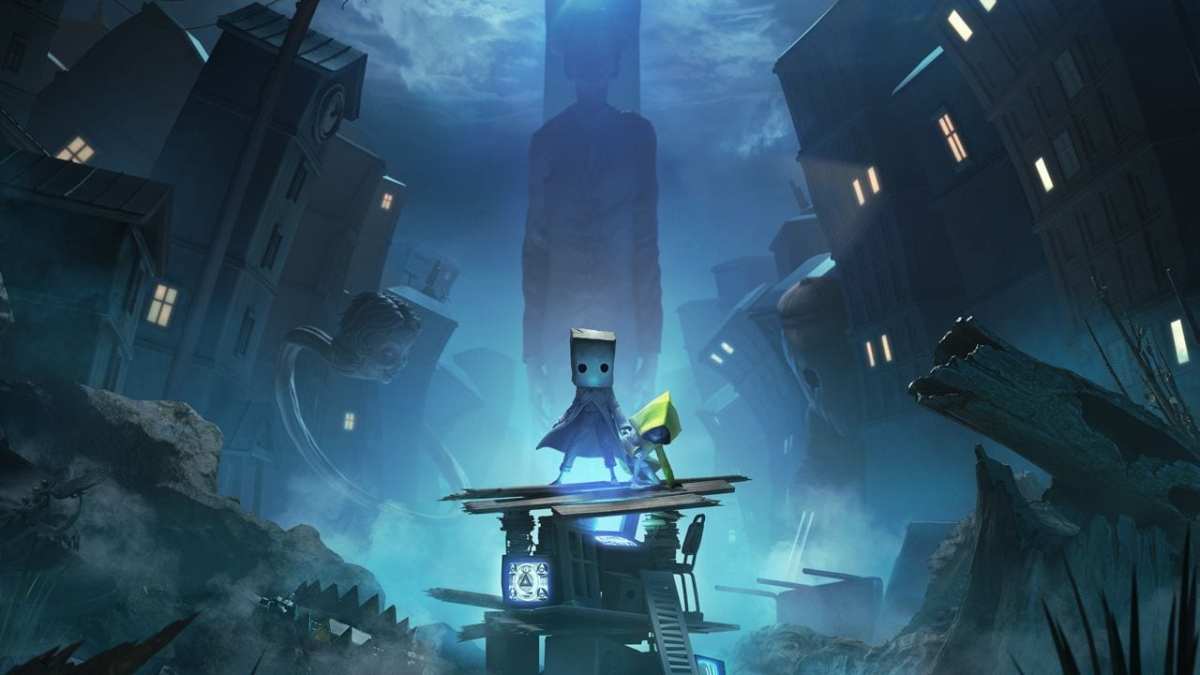Following in the wake of genre-defining titles like LIMBO and INSIDE was always likely to prove a challenge, but after a hugely successful first game, two DLCs, and a mobile spin-off, Little Nightmares feels as though it has long since shaken off those comparisons.
The franchise has forged its own, thriving community that adores its deeply unsettling premise and the intrigue of its uniquely crafted world. Just like the hungry inhabitants of The Maw, they’re ravenous for another adventure, too, and this week they’ll finally be satiated as the much-anticipated Little Nightmares 2 arrives.
Excited to learn more about how the team at Tarsier Studios and Bandai Namco has handled the development of Little Nightmares 2, Twinfinite spoke with Bandai Namco producer Lucas Roussel.
Editor’s Note: Some answers in this interview have been lightly edited for clarity.
Senior Editor Alex Gibson: So, I’m fascinated, how does one brainstorming children’s nightmares? Presumably, the team doesn’t focus on their children!
Lucas Roussel: You made me laugh because I was just imagining putting kids in a dark room and trying to focus test nightmares on them. No, that’s not how we do it! (The ideas) definitely come from all sides of the development team.
We have a senior narrative designer creating the lore for Little Nightmares 2, and he comes up with stories (he thinks are suitable) for nightmares; we’ve got concept artists that come up with very specific designs for enemies that they think they could fit well to the game and universe.
We also have a designer coming up with locations; a hospital, for example, makes for a very fitting place to set a nightmare. Then we meet as a team, and there you’re gathering and talking to each other asking whether we already have a concept that we need a story for, or if we have the story but not a concept for its design.

There is no established process with regard to how we create our nightmares in the game. It comes from different people within the team, and I think that’s actually a strength because everyone is pretty much on the same level and can really bring ideas to the table, whether it’s the lore guy or the concept artist.
Of course, at some point, we need to layout all the environments and locations with characters and the story to fit everything together, but for the conceptual phase, I think everyone is pretty much involved and that’s a positive (for the team) I would say.
Alex: Obviously making games is an iterative process, but are there any scenes or mechanics or monster designs you can think of which were left on the table during development?
Lucas Roussel: There are plenty. When we started discussing Little Nightmares 2, we quickly discussed our desire to involve more characters because we thought that could really open new doors for gameplay mechanics, and that it could also be a real added value for the storytelling.
One question we get asked a lot, though, is why we didn’t add co-op. We considered co-op at a very early stage (of development); we spent a lot of time discussing it.
But we were already adding a lot of new features to the game. We were adding new mechanics to the game, such as combat, larger environments (the outdoor areas, etc): we were adding a lot of stuff already. But beyond that, just from a pure story perspective, we decided this game was supposed to be a single-player experience.
Other things we discarded included concepts from enemies that we were not fully satisfied with. This is very normal in game development.

Alex: Having played the original game and the Little Nightmares 2 demo, environmental storytelling is obviously a huge part of how the narrative is conveyed to players. I imagine the narrative team has a strong vision for how scenes are directed. Does that lead to tugs of war between those in charge of that facet of the experience versus those working on level design and the gameplay side of things?
Lucas Roussel: There’s always discussion, but I don’t think we’ve had any clashes. Our senior narrative designer has been very involved with building the lore, so a situation might occur such as you have a member of the design or art team asking about a location or a character they would like more lore on, and so the narrative designer goes to work.
He won’t go into all the details of implementation. I think all the teams are pretty much a very independent experience to just absorb all the lore from all the other locations and characters and then just set up the environmental storytelling within the game. And, of course, if the narrative designer says things that we think can improve it, then we will tell the team and they will discuss that and improve it from there. It is very organic.
I don’t think there were any frictions; of course, discussions about how we can improve, but there were never any disagreements. Not at all.
Alex: Thinking back to the original game and when you read reviews from critics and players around the community, what were some of the aspects to the game that noticed people critique and recognized needed improvement – and do you feel that you’ve succeeded on that front?
Lucas Roussel: Of course we were listening to feedback from the community and from the press, and one of the points we read most was that the original game’s duration was rather short. But we always planned for it to be a shorter experience, so that we didn’t have to cut anything. It was really the scope we wanted: a three or four hour, 20 Euro game.
But actually, hearing people say that they just wanted more (Little Nightmares) was not a bad thing. So this is, of course, something we took on board for Little Nightmares 2. We definitely took time to make a more evolved game that was a clear step up. That took time because we had to improve the game mechanics to be able to deliver a better experience in order to avoid the game being too redundant.
So this is why we added more exploration; we made an AI companion, added a combat system, and we also made sure environments are more open and have more variation. So I think the ambition from the start was to make a more elaborated version of the original game.
I’d say we’re happy with the result. It’s not perfect. No game is perfect. Of course, you can always take, you know, three more months, six months. to make things really as you wish. But at some point, it’s about saying it’s good enough and now we need to move on.
Alex: Having added basic combat to the game, do you still consider it a “hide and seek game” as the original was described?
Lucas Roussel: Yeah, I think we really wanted to capitalize on our strengths and I think that is one of our strengths, and I think we are faithful to the original Little Nightmares and the universe.
You remain a kid, and you’re thrown into this world and this world is ugly. It’s nice not a good world for children; it is not meant for you. Everything is oversized. There’s danger lurking around everywhere and around every corner. And it’s not like you can grab a weapon and wield it towards enemies and you’re so much stronger.
You remain powerless (in many situations). So you might be able to kill a couple of enemies using weapons, but that’s just going to be because it’s the best way to defuse the specific situation, but in all the other places, you’ll definitely have to hide and seek because you will be facing monsters that are way too big to be attacked with a ladder or a hammer you can find in the environment.

You will have to outsmart them and find something in the environment to allow you to progress. And also now you have Six with you. So either get her help or get her to do something that will attract attention. I think we still remain faithful to Little Nightmares in that regard.
Alex: How can the original and new game’s stories be standalone when the ending of the first game saw Six gain magical powers that destroyed other residents of The Maw. Is that explained at all in the sequel or put to one side?
Lucas Roussel: I cannot reveal too much about that without spoiling the story. So it’s a bit of a tricky question to answer. What I can say is if you play only Little Nightmares 2 straight through, you might not get all the answers you want. But if you try to dig more you might be able to get something that will connect the two and then make a link that you’re looking for.
I think these types of themes are at the essence of the IP, and it’s very important that our games have a very strong theme. The first game was about hunger — overconsumption, of food, and Anna and butchery. But also, The Lady was hungry for power and wealth. Little Nightmares 2 is more about escapism. That’s the core theme of our game — how people try to just evade their daily life because it’s too hard to support.
So we’ve got the strong connection with television in Little Nightmares 2, and that’s probably a way of you know, depicting our society it is probably our society is probably getting too hard to face, so we’d rather look at it through our smartphone screen or TV screen, and we get absorbed by that. I mean, I was just taking myself sometimes: if I would be another person in the room looking at me, they might be thinking, hey, why are you spending so much time on your new phone or TV on the computer?
I mean, there’s definitely a lot of very good things with all the technology, but it also absorbs you and consumes you in a way that we wanted to yeah to show in Little Nightmares 2 to and of course the story linked to that and can’t we say more without going too far.
But yeah, that’s the core theme — how people try to escape. Also at the Hospital, you probably have seen, there’s some food station gameplay with the mannequins. They’re dismembered people trying to change their bodies for the sake of escaping their reality. Every location in the game brings this idea of escapism.
Alex: I want to shift gears to puzzle-gameplay. In the original, while they served their role in adding a layer of strategy to the experience, they were perhaps on the simple side. If you compare it to a game like INSIDE, for example, they weren’t memorable in the same way. Has the team worked toward addressing that this time around if that is, indeed, a focus, or were you happy with the level of complexity to the puzzles in the original game and therefore focused your attention elsewhere?
Lucas Roussel: Definitely. I mean, I think this is already something we’ve done with the DLCs and something we’ve been working on for Little Nightmares 2. The game needs to be accessible but at the same time challenging for players. I think it’s difficult because you don’t want to exclude too many people, but we were aware that we have to make some parts more complex.
Difficult? I’m not too sure if you want to put a difficulty gate on it because it’s kind of risky; it could end up being very frustrating for the player. One thing that is important to remember is that we are not hand-holding the player. We’re not hand-holding the player with, for example, some shiny elements to the environment or a message for being like, “Hey, you should check this out.” We’re not doing that at all because it’s about immersion in our world.

So we have to be careful about not suddenly a very big spike in difficulty. But I think this time around we have more experience following the release of the original game and its DLCs — the team knows how to better pace and implement the puzzles.
Also, this time around we have Six, and she’s persistently in the environments. Players can use her as a reference, though not too obvious either because we don’t want her to point out every puzzle — that would not be fun. But at some point, she might go somewhere and look at something. It’s pretty subtle, some people might even miss it. Although, some people will definitely notice that so that’s also a way for us to increase the complexity of the puzzles.
So I think compared to the first game we have fossils more complex on their difficulty. There is always a small debate on how complex they should be, but I think we have a team of good designers, and also game designers at Bandai Namco who support the team to address any issues. So I hope we just got the right formula.
Alex: Is there an increase of expectation relative to the success of the original Little Nightmares (2 million sales), and has that put additional pressure on the team? Or on the contrary, did this actually give you confidence to push and expand on ideas you had for the original?
Lucas Roussel: I think it does, yes. I also think, however, it’s a good sort of pressure. Not all pressure is bad. We’re very happy with the results of the first game and we’re very happy to have a very engaged community. But, of course, as soon as we announced Little Nightmares 2 there was a growing demand for more information. And this time I think people are waiting for us, which wasn’t really the case with the first game. So that adds some pressure to the team, for sure. But at the same time, it’s very satisfying to look at what the community is doing and saying.
You have like so many fan-made creations around the IP now and license, and that’s really great. Of course, you can’t be negative about that. But yes, a lot of people are waiting for the game so you feel you cannot disappoint them.
Alex: And so if you sold two million copies of the original game, do you have a figure in your head that would determine success for the sequel?
Lucas Roussel: Well, let’s be honest, we always think about numbers. It’s part of the industry. However, I don’t think this is the most important objective. I think our objective is to have a great game first, one that our community will be happy about. Of course, though, you want to seduce more people. You always hope to pick up new members of the franchise with Little Nightmares 2 because, perhaps, it will be more appealing because it is longer and has more features. This, we hope, could pull in newcomers.
So the main objective is to extend the fanbase. One thing we do know from the first game is that it is a long seller. Little Nightmares is still selling a very decent amount of copies today, which means –I think– that we have a very active community who are talking to their friends and families about it.
Hopefully, Little Nightmares 2 will see the same trend, a long seller, and that people will hear about progressively as they look for more content.
Little Nightmare 2 launches on PS4, Xbox One, Nintendo Switch, and PC later this week, Feb. 11. The game is playable on PS5 and Xbox Series X|S via backward compatibility, though a next-generation upgrade will launch later in 2021.
For our thoughts on the game, check out our fully-scored review.













Updated: Feb 12, 2021 08:37 am